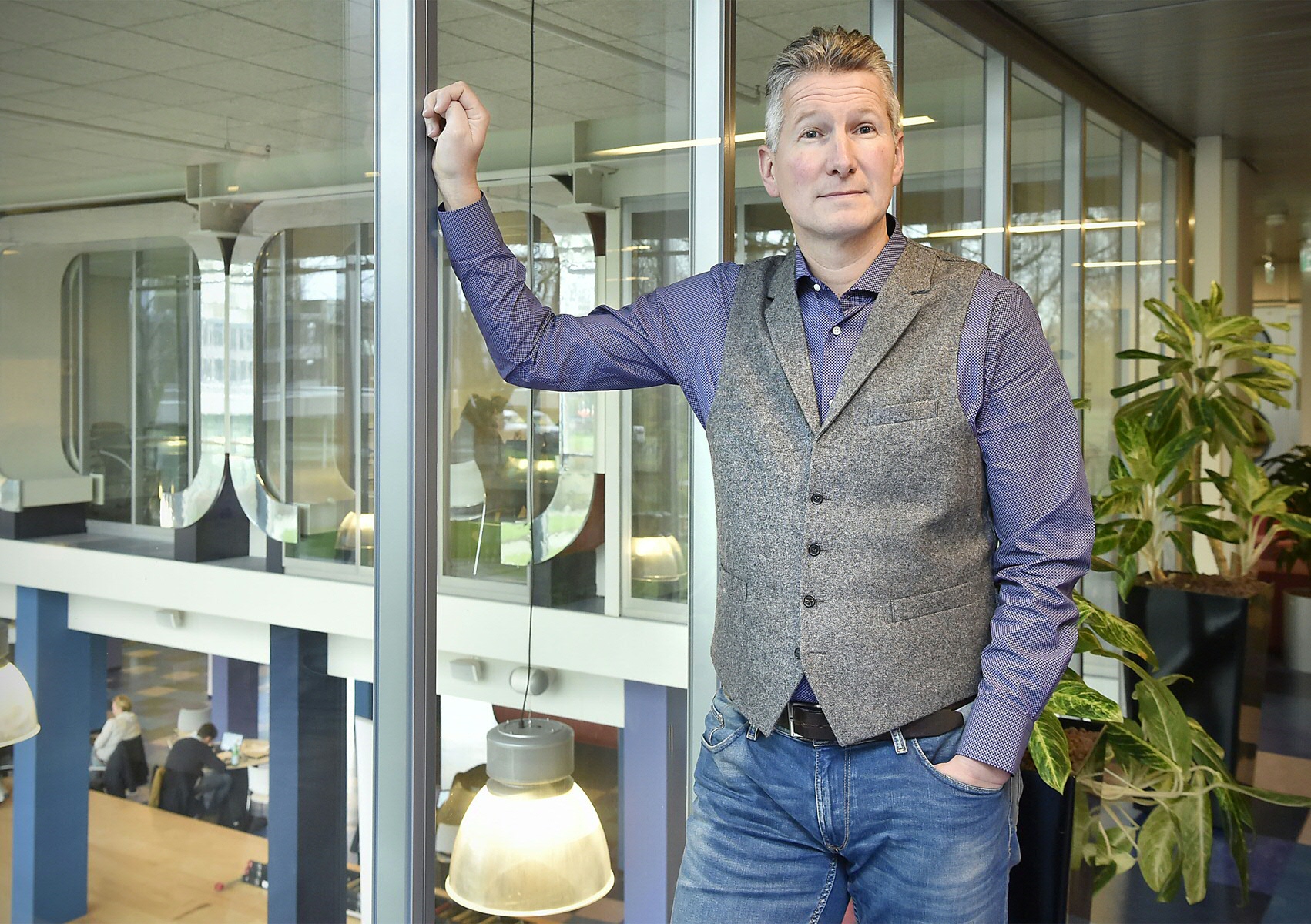Loyalty is at the heart of the matter

Selling as much detergent and ketchup as possible is no longer the holy grail in marketing, says Professor Tammo Bijmolt. He is involved, for example, in a ‘saving program’ that stimulates medication compliance and healthy behavior among cardiovascular patients. ‘This is research that is improving the world around us. I am not saying that all my studies are, but some of them really have immediate social value.’
Text: Riepko Buikema, photographs: Elmer Spaargaren
One day Bijmolt found himself at the Leiden University Medical Center, surrounded by cardiologists, nurses and health psychologists. He was invited to speak about customer loyalty and saving programs. Today, digitization is offering marketers unprecedented opportunities to analyze and influence consumer behavior. Can this expertise be used to prevent heart patients from relapsing into old bad habits?
More useful than selling detergent
‘It's a great way of using marketing knowledge differently’, Bijmolt says with a smile. ‘The goal is to study whether a saving program stimulates medication compliance and helps the persistence of better habits among patients. Being able to nudge some of them in the right direction is very valuable and more useful than selling as much detergent as possible.’
Healthy behavior
Another example of social value is Bijmolt’s collaboration with Menzis. This health insurance company is offering its customers the ‘SamenGezond’ online savings programme. ‘Our research roughly reveals that such initiatives make customers somewhat more loyal. This does not apply to everyone all the time, but, on average, consumers tend to adjust their behavior when participating in a loyality program. What we want to know is: will the participants also show healthier behavior? Will they exercise more and eat healthier thanks to ‘SamenGezond’? If so, that would imply major positive personal and societal consequences.’

Making the world a little better
Through online profiles and digital purchasing data, marketers have a staggering number of opportunities to influence our behavior. Bijmolt, an international expert in the area of registered consumer behavior, sees a tentative shift towards applications that have social meaning. ‘That is motivating. Early on in your career, you tend to enjoy the success of getting your research published. After that, you start aiming for better publications. But at some point, you find yourself seeking different kinds of recognition, for example through academic awards or increasing numbers of citations. I am now in that phase where it pleases me to see that my papers are being put to use; that the world, or at least someone, is benefitting from them.’
Reducing product return rates
‘Fortunately, marketing too has seen an increasing focus on wellbeing and sustainability in recent years. This is noticeable in companies, among academics and at our own faculty. The Groningen-based Digital Business Models signature area, for example, investigates among others how companies can reduce the number of online customer returns. When it comes to online orders, everybody seems to think: keep ‘em coming. Some products have a return rate of more than 50 percent. Of course, reducing the number of returns is important for the profitability of businesses, but marketers also carry a social responsibility in this respect. Online returns lead to waste and pollution. Part of the returned products are even destroyed.’
Wobbly stand
The waste involved in online ordering recently led to a small domestic quarrel at the Bijmolts’. ‘We had ordered a stand for a stage piano, which turned out to be wobbly. After filing a complaint, we immediately received a new one and were told to keep the old one as well. My wife almost got angry that the company selling the stand was unwilling to take the first one back to repair it and sell it on. But it is just not worth picking up for a company.’

Marketing is everywhere
That recognizability of marketing is one of the things that make his field so much fun, Bijmolt believes. ‘I order quite a lot online myself: books for work, tools, power strips and nice lamps for our home renovation in Beilen. In doing so, I never stop wearing my academic hat. I once saw a German website that showed customers a pop-up window telling them how much other customers were returning. While there were no immediate consequences, it did send the subtle message: please note that you are returning much more than other people. This raises awareness of your own behavior. A little social pressure can work well when applied with decency.’
Don’t overdo it
As contradictory as it may sound coming from a marketing expert, it can sometimes be beneficial not to overstimulate online ordering. Bijmolt’s PhD student Alec Minnema, for example, found that too many positive online reviews led to disappointed customers once the package was on the kitchen table, and thus to returns. ‘We need to think about using marketing to reduce the number of returns. No one benefits when people order things only to send them back again after all. Stimuli might include rewards that can be earned by not returning products, privileges for customers who don't return many products or automated advice for customers who put two pairs of the same shoes in their online shopping basket in sizes 8 and 8.5.’
| Last modified: | 12 March 2024 09.12 a.m. |
More news
-
19 April 2024
New thesis prize for master's students of Economics and Business
How can we encourage economics and business students to deal with important societal challenges in their master's thesis? The 14 Dutch faculties of economics and business, united in the Council of Deans in Economics and Business (DEB), have set up...
-
18 April 2024
Ward Romeijnders appointed as Professor of Optimization under Uncertainty
The Faculty of Economics and Business is pleased to announce that Ward Romeijnders has been appointed as Professor of Optimization under Uncertainty. The chair is situated within the Department of Operations.
-
12 April 2024
Inaugural Lecture Corine Noordhoff: Future ready retail
In her inaugural lecture, Professor of Retail Marketing Corine Noordhoff will provide insights in the cornerstones for survival and adaptation in the retail sector. Noordhoff’s inaugural lecture will take place on Friday 19 April 2024, 16:15 –...
